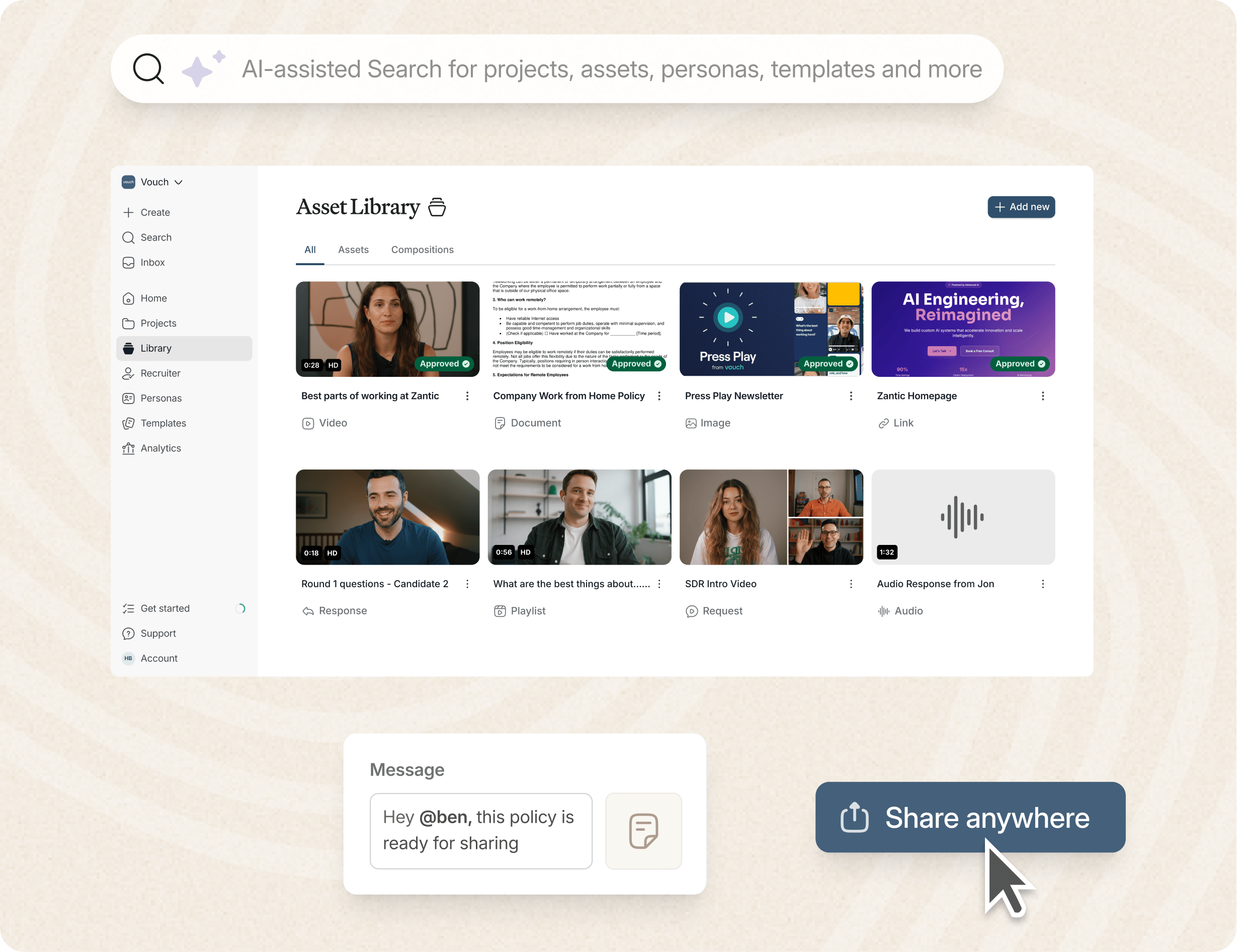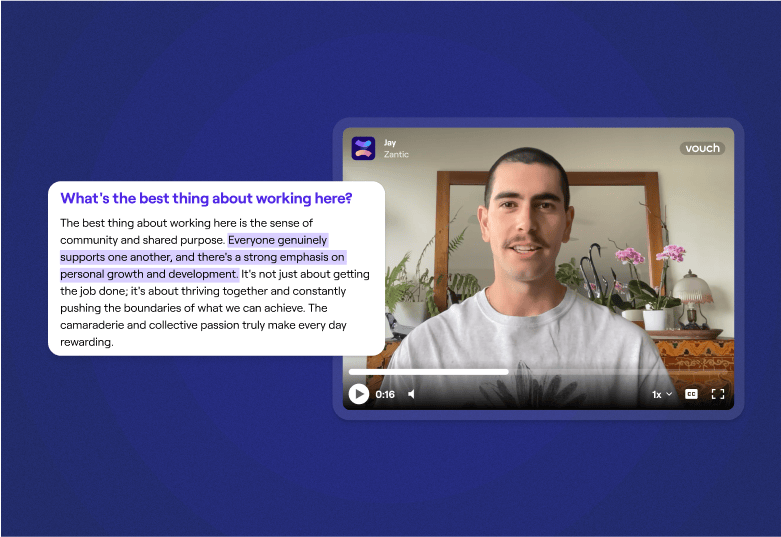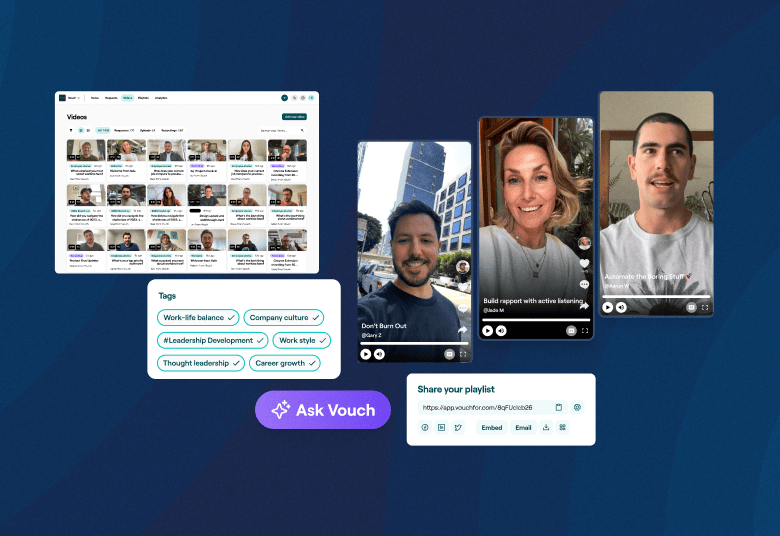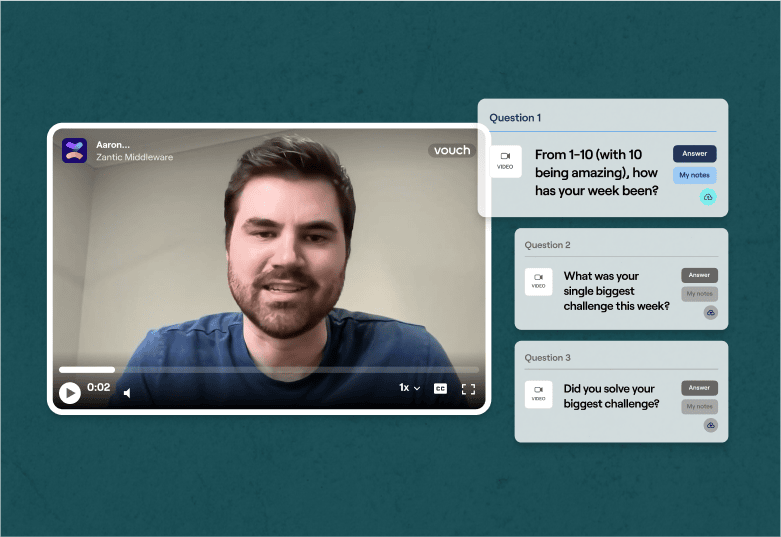
Cross Training Employees: The 2025 Guide to Building a Versatile Workforce
In today's world, the ability to adapt quickly is critical for big and small companies alike.
One of the most effective strategies to enhance flexibility in your company while reducing disruption is cross-training employees.
Cross-training can dramatically improve your operational efficiency, employee engagement, and job satisfaction.
This article will take you through everything you need to know about cross-training, backed by real 2024 data - to help you better implement an effective cross-training program in your organization, leveraging cross-training tools like Vouch to speed up the entire process.
Let's dive in.
What is Cross-Training?
Cross-training, also known as multiskilling, job rotation, work enrichment and more, is simply the practice of training employees to perform tasks outside of their primary job roles.
Instead of being confined to a single skill set, cross-trained employees become capable of handling a variety of tasks across departments or functions.
This leads to a versatile workforce that can adapt to your business's shifting needs, cover for absent employees, and reduce downtime during busy times.
But there are some downsides to cross-training that you need to be aware of, which we'll dive into further below.
The AI-enabled workspace for talent teams.
- Unified workspace for talent teams
- Accelerate hiring with AI tools
- Auto-generate polished hiring and employer brand content
- Easily repurpose assets across all channel

Why Is Cross-Training Essential in 2025?
1. Improves Your Operational Efficiency
A cross-trained workforce ensures that your operations continue smoothly, even when key employees are out of the office or during busy seasons.
Cross-training improves the ability of the entire team to step up and complete critical tasks without losing momentum.
According to a 2024 LinkedIn Learning survey, companies with cross-trained staff have a 40% improvement in operational efficiency, allowing them to react faster to market demands.
2. Improves Employee Satisfaction and Retention
Cross-training provides employees with new challenges and growth opportunities, which significantly boosts job satisfaction.
In fact, a 2024 report from Gallup found that companies offering cross-training opportunities had a 29% higher employee retention rate.
Employees who see room for career growth within their company are more likely to stay.
3. Can Improve Customer Satisfaction
A cross-trained workforce can also enhance customer satisfaction.
If one department is overwhelmed, cross-trained employees from other teams can jump in to ensure customers' needs are met.
A 2024 Forrester Research study revealed that companies practising cross-training saw a 22% increase in customer experience ratings, proving the direct link between cross-training and improved service.
4. It's Cost-Effective Training
While traditional training programs can be costly, cross-training often comes with a smaller price tag.
By leveraging existing talent and redistributing responsibilities, companies save on the costs of hiring additional staff.
Training Industry estimated in 2024 that cross-training reduces overall training costs by 30%.
5. Can Reduce Employee Turnover
Employee turnover is a costly issue for many businesses. Cross-training can help mitigate this problem by increasing employee engagement and loyalty.
A study from the Society for Human Resource Management (SHRM) found that businesses with active cross-training programs experienced a 17% lower turnover rate compared to those without.
Engaged employees who see clear paths for development are less likely to leave.
What Are The Deeper Benefits of Cross-Training Employees?
1. Builds You A More Versatile Workforce
When you cross-train employees, you develop a workforce that can handle multiple tasks.
This flexible workforce can fill in gaps left by absent employees, take on additional responsibilities, and switch roles as needed.
This not only ensures that your business operates smoothly but also creates a more agile and future-ready company.
2. Improves Team Unity
Cross-training fosters a sense of team unity because employees gain an appreciation for the challenges faced by their colleagues in other departments.
Understanding other job roles helps build empathy and encourages better communication across teams.
3. Reduces The Risk of Burnout
Spreading out major tasks and responsibilities across several employees instead of relying on just one or two individuals can reduce the risk of burnout.
Employees who feel supported and not overburdened are more productive and maintain higher employee satisfaction levels.
4. Provides Continuous Learning and Development
Employees with access to cross-training opportunities are constantly learning new job functions, which leads to professional growth.
Continuous learning keeps employees engaged and prepared for promotions, further boosting employee retention.
5. Grows your Employer's Brand
When you provide employees with an opportunity to grow, your employer brand will also grow, and you will organically start attracting people who want to learn and be in a company like yours, be it through your online reviews like Glassdoor and LinkedIn or your employee referrals which are worth their weight in gold.
Case Study: A Bakery's Success with Cross-Training
Let's take a look at how cross-training can typically transform operations using a small business. This case study applies to global corporations, too.
The Setup
A popular local bakery faced a recurring problem during busy holiday seasons: employees would call out sick, or the store would get busier than expected, leaving them understaffed.
The bakery team only had a few people trained on the cash register, while others focused on specific kitchen staff tasks. This imbalance led to stress, long customer wait times, and lost revenue.
The Cross-Training Program
The bakery owner decided to cross-train their staff using Vouch video and a micro-learning format for speed and simplicity.
Kitchen employees learned how to manage the cash register, and front-of-house staff were taught how to perform basic prep tasks like assembling sandwiches or boxing pastries.
They implemented a formal cross-training plan to ensure everyone had an adequate knowledge level of different tasks without sacrificing their primary duties.
The Results
Within a few months, the bakery saw a 25% improvement in customer satisfaction (a common result).
Employees felt more empowered to help each other out during peak times, reducing stress and improving team morale.
The owner also reported a 15% increase in revenue during the next holiday season since they no longer turned customers away due to being understaffed.
Additionally, employee turnover decreased by 18%, as employees valued the opportunity to develop new skills and saw a clear path for career growth within the bakery.
As mentioned, these same rules apply to any business; for example, global fashion giant H&M also sees the same results through cross-training.
What Are The Best Practices for Implementing Cross-Training?
If you're ready to implement cross-training in your organization, follow these steps for a smooth rollout:
1. Start with The Critical Roles You Need Contingency For
Begin by identifying key team members and crucial tasks that keep your business running. Train others to fill these roles first.
For example, in customer service, having multiple employees cross-trained on managing the phones or handling complaints ensures there are no gaps in customer experience.
2. Develop a Clear Cross-Training Plan
A successful cross-training program requires a well-structured plan. Outline the skills you want employees to learn and match them with the right roles.
Use an employee cross-training plan template to map out who will be trained on what, how long the training will last, and any necessary resources.
3. Offer Constructive Feedback
Provide regular feedback throughout the cross-training process - something Vouch can help you with so that your employees need to know what they're doing well and where they can improve.
Constructive feedback encourages growth and reinforces the value of cross-training.
4. Monitor for Burnout
One potential drawback of cross-training is that employees may feel overwhelmed by their additional responsibilities.
Regularly check in with cross-trained employees to ensure they aren't taking on too much. Adjust workloads as needed to keep employee satisfaction high.
5. Celebrate Success
When employees successfully complete their cross-training and begin using their new skills, be sure to acknowledge their hard work.
Recognizing employees' efforts builds morale and motivates others to participate in the program, which can also help boost your employer brand!
What Are The Challenges and Risks of Cross-Training?
While cross-training offers many advantages, it's not without its challenges. Here are a few things to watch out for:
- Risk of Burnout: Taking on too many roles can lead to employee fatigue. It's important to maintain a balance and ensure workloads are manageable.
- Learning Curve: Some tasks may require more time for employees to master, particularly if they involve specialized skills.
- Potential for Skill Dilution: Over-training employees across too many areas might cause them to lose focus on their primary job role.
Despite these risks, with careful planning and ongoing support, cross-training remains one of the most effective strategies for creating a more agile workforce.
FAQs
What is cross-training in the workplace?
It's when employees are trained to perform tasks outside their primary job role.
Why is cross-training important?
It increases operational efficiency, reduces turnover, and improves customer service.
How long does cross-training take?
It varies by role but typically ranges from a few weeks to several months, depending on the complexity of the tasks.
Can cross-training lead to burnout?
If not managed properly, employees may feel overwhelmed by added responsibilities.
What are the key benefits of cross-training?
It improves team flexibility, employee satisfaction, and customer experience.
How do you start a cross-training program?
Identify critical roles, create a structured plan, and offer feedback throughout the process.
Is cross-training suitable for all industries?
Yes, cross-training can benefit nearly every industry, from retail to manufacturing.
Summary: Cross-Training Employees in 2025
Cross-training employees can dramatically improve operational efficiency, employee engagement, and job satisfaction.
By training staff to handle tasks outside their primary roles, companies build a more versatile and agile workforce capable of filling gaps during busy times or when key employees are absent.
The process involves starting with the most critical roles that you need to cover, offering constructive feedback, and ensuring employees don't experience burnout. That's where tools like Vouch can help, with microlearning that easier for your employees.
Though it has potential drawbacks like burnout or skill dilution, cross-training is a highly effective tool for developing a flexible workforce and improving business continuity.
Transform Your Employee Cross-Training With Vouch!
Loved by companies like Canva, Nike, Cisco, HubSpot, Amazon, and more, tools like Vouch make leveraging video in your business communication, recruitment and cross-training remarkably easy.
Be sure to book a Vouch demo today and chat with a video training expert.
You might also like

Elevate Your Brand Today With Vouch
Discover how Vouch can accelerate talent acquisition while helping you stay on-brand.





